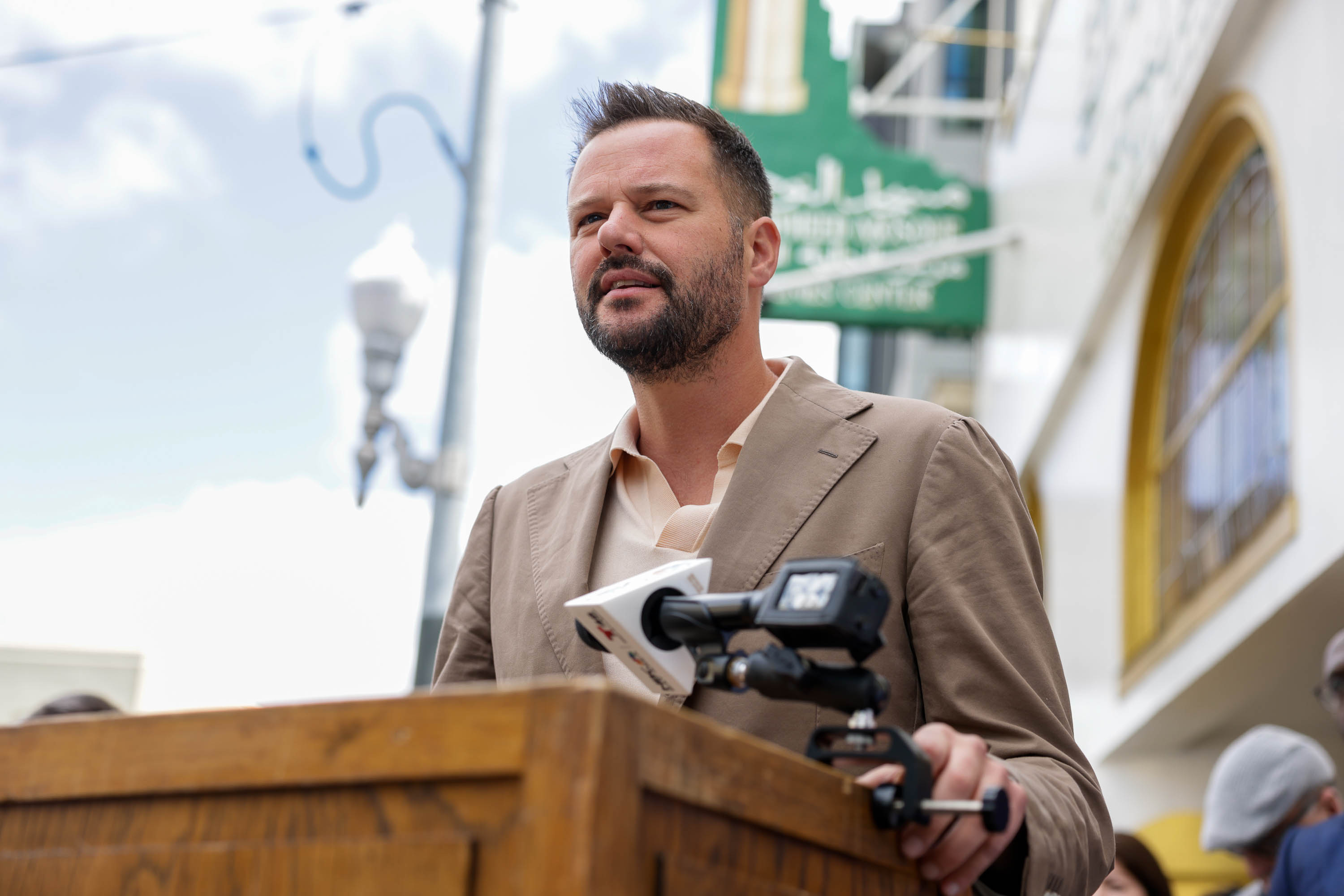The constant debate over how and where to build housing in California typically finds neighborhood preservationists and a pro-development cohort fiercely at odds with one another.
So it’s no small feat that a new bill from Assemblymember Matt Haney, who represents San Francisco, appears to have aligned both YIMBYs and NIMBYs around fast-tracking conversion of historic downtown buildings into housing.
Haney said his new bill, AB 3068, is meant to tackle the state’s exploding housing crisis by finding new uses for the glut of vacant offices currently crippling downtowns across the state, including San Francisco’s hollowed-out central business district.
“This will make conversions a lot quicker, cheaper and clearer to execute,” Haney, who also serves as chair of the Select Committee on Downtown Recovery, told The Standard in an interview.
Experts who have studied the feasibility of conversions say limited inventory and high costs remain the highest barriers to breaking ground on such projects. Buildings that do lend themselves to conversions generally skew older, and that comes with a Pandora's box of complex and often conflicting historical preservation rules.
“We’ve been fighting this zero-sum game at the local level where it’s either something gets completely knocked down or nothing happens at all,” Haney said. “Things get stuck in the courts, those fees add up and we get no clarity on how determinations are made.”
Haney’s bill is meant to create streamlined statewide guidelines for developers and local governments to follow. Critically, if signed into law, AB 3068 would give qualified projects automatic state approval for tax credits focused on historic buildings.
Historic tax credits are incentives provided by the government for the rehabilitation of historical buildings. Developers can receive an allowance that reduces the project overall tax liability and can help with financing.
“This bill will bring opportunities for thousands of people to live near high-paying jobs and other amenities,” Rafa Sonnenfeld, policy director at YIMBY Action, said in a statement.
The bill offers qualified projects streamlined environmental and entitlement reviews, exemptions from certain fees, and the ability to proceed with conversion in areas not traditionally zoned for housing.
Haney argued he got historic preservationists on board by providing more certainty around what historical features will be protected from redevelopment or modification.
“We’re not going to be rash,” Haney said. “We should protect enough that is needed and necessary. Vacant buildings that end up becoming sculptures don’t [do] us any good either.”
Cindy Heitzman, executive director of the California Preservation Foundation, said the law would mean that developers can bypass the local review process for federal or state historic tax credits if they are already deemed compliant by the state.
Heitzman’s organization worked together with YIMBY Action on a policy to fast-track housing while preserving the “unique character” of the state’s historic sites. She said the trade-off of accepting this bill meant a shorter time period to determine whether a building is historic.
Conversions are a hot topic in San Francisco, given the city’s near-40% office vacancy rate, and city officials have been trying to grease the skids to make them happen. In the March election, voters passed Prop. C, a transfer tax break for commercial buildings sold to parties interested in converting them into housing. That’s on top of legislation last year spearheaded by Mayor London Breed and Supervisor Aaron Peskin to relax Planning Code rules around conversions.
So far, though, these policies have not amounted to much in the way of shovels in the ground amid economic headwinds like high interest rates and rising construction costs.
Historical downtown buildings such as the Humboldt Building at 785 Market St. and the Warfield Building at 988 Market St. have been pitched by local developers as attractive conversion candidates, but either have yet to break ground because of delays or financial problems.
For example, the Warfield building, which was the first conversion project approved in the wake of the pandemic, is currently at risk of foreclosure.
Prior to the pandemic, conversions were only a limited solution. Fewer than 10 major office buildings have been converted to homes in the last two decades, totaling fewer than 800 total units, according to SF Planning officials.
Some industry sources say demolishing an older property, rather than going through an extensive seismic retrofitting and massive redesign, is generally more attractive to investors. San Francisco-based Prado Group, for example, is preparing to knock down two old medical campuses in Presidio Heights to build over 1,000 units of dense housing.
Haney suggested that the Financial District, North Beach and Market Street contain various buildings suitable for conversions, but he did not highlight any specific buildings.
He said to coax more of this type of development, the bill would also allow for the redevelopment of land adjacent to historical sites, such as parking lots, and would apply to mixed-use projects, so long as they are more than 50% residential and adhere to local affordable housing requirements.
“Both [preservationists and YIMBYs] had to set aside assumptions about where the other one was coming from,” Haney said. “This reflects the consensus there is around the need to build more housing.”
AB 3068 and a slew of other housing bills are currently winding through the committee process prior to a vote. The Legislature has until the end of August to vote on the bill
